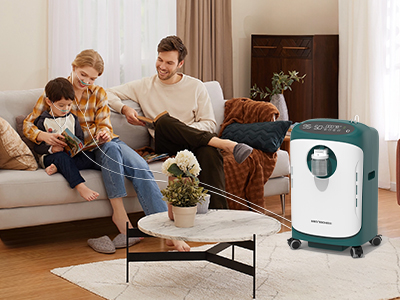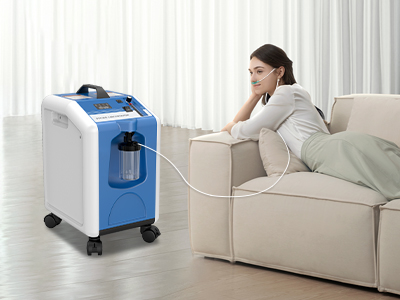11 Oct 2024
Home oxygen therapy has become an essential part of life for millions of people around the world, offering individuals with respiratory conditions the ability to breathe more easily within the comfort of their own homes. The demand for reliable oxygen solutions is critical, not just for convenience but also for the ongoing management of chronic health conditions that impede the lungs' ability to provide adequate oxygen to the body.

Understanding Home Oxygen Therapy
Home oxygen therapy is a medical treatment designed to provide supplemental oxygen to individuals whose blood oxygen levels are below normal. It is prescribed for a variety of conditions, including chronic obstructive pulmonary disease (COPD), pulmonary fibrosis, and severe asthma, among others. For those in need, a stable and steady source of oxygen can be life-changing, alleviating symptoms like breathlessness and improving overall quality of life.
The Evolution of Oxygen Solutions
Historically, patients requiring oxygen therapy were limited to using heavy, cumbersome oxygen cylinders, which, while effective, were not the most practical for everyday home use. These cylinders needed to be refilled regularly and posed significant storage and transport challenges.
With the advent of oxygen concentrators, a new era in oxygen delivery began. These devices revolutionized home care by eliminating the need for frequent cylinder replacements. Instead, oxygen concentrators draw in air, filter out nitrogen, and deliver concentrated oxygen continuously to the user. This advancement has made oxygen therapy at home far more convenient and accessible for patients with varying respiratory needs.

Benefits of Oxygen Concentrators for Home Use
Oxygen concentrators offer a multitude of benefits, especially when compared to traditional oxygen cylinders. First and foremost, they provide an uninterrupted oxygen supply as long as the device is powered. This ensures patients never run out of oxygen at critical moments, giving them peace of mind.
Additionally, many modern concentrators are lightweight and portable, allowing for easy movement around the home or even travel outside the house. They are typically more cost-effective in the long run, as users no longer need to pay for refilling oxygen tanks. This makes them a smart, long-term investment for individuals requiring consistent oxygen therapy.
Key Features of a Home Oxygen Solution
Selecting the right oxygen concentrator for home use depends on a variety of features tailored to the patient's needs. The flow rate is one of the most critical aspects to consider. Some patients require high-flow oxygen, while others may need only a low, consistent rate. Devices with adjustable flow rates can accommodate varying medical needs.
Another crucial factor is the power source. Oxygen concentrators typically run on electricity, but many portable versions also come with battery options, ensuring continued use during power outages or while away from home. For comfort, low noise levels are essential, especially if the concentrator will be used during sleep or in quiet environments.
Safety Considerations for Home Oxygen Use
While oxygen therapy provides tremendous benefits, it also comes with safety precautions that must be observed. Oxygen is highly flammable, so it’s critical to avoid open flames or smoking near the device. Patients and caregivers should be educated on proper usage, including the importance of keeping oxygen tubing clear of heat sources or sharp objects that could cause leaks.
Storage is another key safety consideration. Oxygen cylinders (if used) must be stored upright and in well-ventilated areas. For concentrators, regular maintenance is vital to ensure the machine operates safely and effectively.
Choosing the Right Oxygen Solution for Your Home
Choosing the best oxygen solution depends largely on individual medical requirements and lifestyle. For some, a stationary oxygen concentrator with higher output may be ideal for continuous use at home. For others, particularly those who are more mobile, a portable oxygen concentrator might be a better fit. Portable units allow for greater freedom, but may offer lower oxygen flow rates compared to their stationary counterparts.
Consulting with a healthcare provider is the first step in determining which solution is right. Ensuring the device aligns with both the patient's oxygen needs and their day-to-day activities is essential for successful therapy.
Ensuring Longevity of Your Home Oxygen System
Proper maintenance is crucial to extending the lifespan of your oxygen concentrator. Regularly replacing filters, as recommended by the manufacturer, helps keep the device operating efficiently. Periodically cleaning the exterior and ensuring the air intakes remain unobstructed will also enhance the machine's performance.
Additionally, being proactive about troubleshooting common issues—such as unusual noises, diminished oxygen output, or warning lights—can prevent minor problems from becoming major repairs. Most concentrators come with a warranty, so understanding the terms of service will ensure that any necessary repairs are covered.
Conclusion
Oxygen concentrators, with their numerous benefits, have transformed the way individuals receive therapy at home, providing both convenience and reliability. By choosing the right model, observing safety guidelines, and maintaining the device properly, patients can ensure long-term comfort and health. Continuous communication with healthcare professionals will also play a key role in monitoring oxygen needs and adjusting therapy as necessary.
Keywords: oxygen therapy
Originally published 11 Oct 2024, updated 11 Oct 2024.